POLSKI PROJEKT: Polish Posters and Typefaces
The HMCT South Campus Gallery presents selections from the HMCT Archive collection of Leonard Konopelski, artist, designer and longtime educator at ArtCenter. The work will showcase the unique creativity of Polish poster artists from mid-20th century to present day.
The Konopelski poster collection at HMCT consists of works collected by Leonard Felix Konopelski—painter, art educator and graphic designer—currently serving as associate professor at ArtCenter College of Design. The posters, originally acquired by Leonard between 1962 and 1998, include works by world-renowned artists in poster design such as Roman Cieślewicz, Roman Kalarus, F. Kafka, Jan Lenica, Henryk Tomaszewski, Franciszek Starowieyski and Waldemar Świerzy. In addition, Leonard’s own posters from his fifty year professional career—as an illustrator, graphic designer and art director—are represented.
These posters represent the oft-referenced Polish School of Posters, combining the aesthetics of painting with the succinctness of simple metaphor and the graceful art of political, social and cultural allusion. The works epitomize the characteristics of painterly gesture, linear quality and vibrant colors, reflecting a sense of individual personality, humor and fantasy. These are the elements that distinguish the Polish poster, and the striking amalgamation between designer and artist. Posters of the Polish Poster School represent a significant influence in the international development of graphic design on poster art throughout the world.
—Leonard Konopelski
The exhibition also features typographic specimen sheets from Typoteka.pl, a comprehensive index and archive of typefaces created by authors associated with Poland, dating as far back as 1474.
Various authors (type designers, artists, letterers, engravers, punchcutters) design forms of script (letters and signs), so that others can use these letters and signs to create inscriptions and to compose texts. Typoteka.pl focuses on forms of script created for the needs of typography: typefaces. Typefaces are letters and signs created for automated setting of texts (typesetting), and are reproduced as metal fonts, matrices, transfer media, and finally as digital fonts. We hope that others create similar indexes that catalog other, equally important, forms of script: inscriptions made in stone, lettering, calligraphy.
—From the Typoteka website
Exhibition runs November 18 through February 28, with a public reception on Thursday, November 17, 5–8 p.m. HMCT South Campus Gallery is free and open to the public; accessible every day when school is in term from 9 a.m.–7 p.m.
